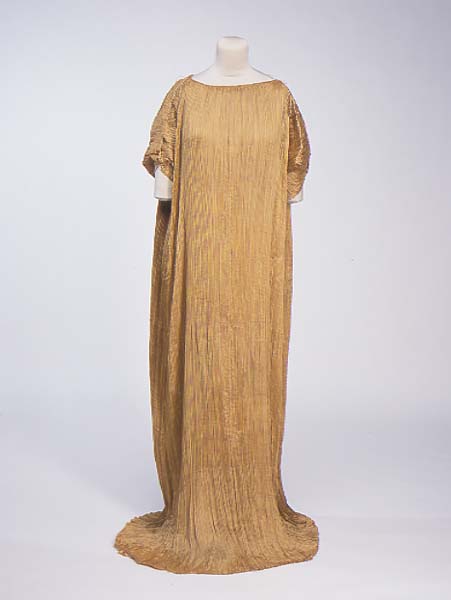dress
Summary
Gold pleated silk "Delphos" dress in 4 widths of fabric, with high boatneck and short, triangular batwing sleeves laced at top edge with gold cord. Seams between torso and sleeves contain silk ribbons for gathering. Sleeveless gold silk camisole-lining; white petersham waistband. Lining fastens centre front (see bust pleats). Seamed centre back. Very similar to Fortuny's original patented design, see 'Mariano Fortuny: His Life and Work' by Guillermo de Osma p. 94.
Display Label
Working from Venice from about 1900, Mariano Fortuny (1871 - 1949) created one of the most enduring neo-classical "looks" of the twentieth century. Fortuny gained an early grounding in historic fabric patterning and design from his parents who collected antique textiles, and who encouraged him to involve himself in designing for the theatre. In these costume designs for the stage, he often looked directly to models from the Greek and Roman classical past, predating his fashionable clothing designs. After 1910, Fortuny worked as a couturier, patenting a number of new techniques, including his famous pleating style for silks (which he made up into "Delphos" dresses in direct imitation of classical styles). He also invented a type of polychrome printing on thick pile velvets, and a system of rotary stencilling. Worked from Venice, he also opened "artistic" boutiques in Paris and Milan, and maintained outlets in shops such as Liberty & Co in London. His outfits were always aimed at an elite luxury market, but they have since proved to be timeless, still sought after and worn today. This example in gold silk was bought by the museum about ten years ago at a London auction.
Object Name
dress
Creators Name
Date Created
1908-12
Dimensions
Length: 150cm
accession number
1991.154
Collection Group
Medium
Legal
© Manchester Art Gallery

